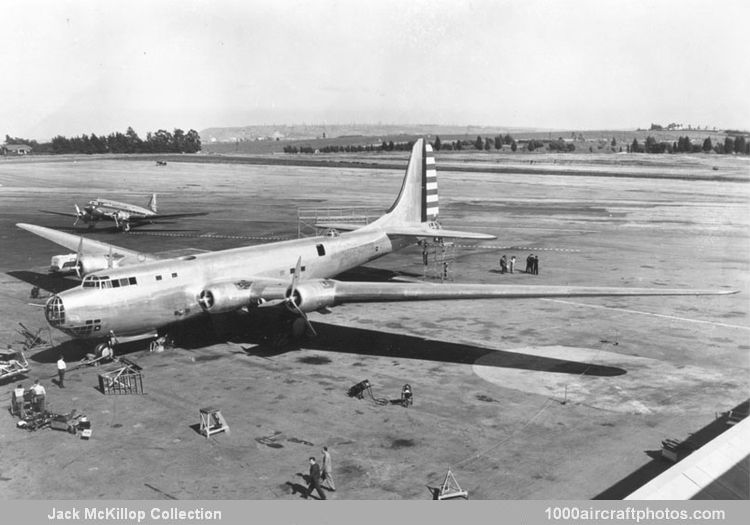06/30/2006. Remarks by Jack McKillop: "The one-of-a-kind XB-19 was an experimental long-range bomber and the largest aircraft built by Douglas up to that time. Completed in May 1941, three years late, the XB-19 made its first flight on June 27, 1941 from Clover Field, Santa Monica, California, USA, to March Field, Riverside, California. After the Japanese attack on Pearl Harbor on December 7, 1941, the XB-19 was camouflaged and armed for its last four test flights at March Field.
It was also pictured when it arrived at Wright Field, Ohio, USA, on January 23, 1942, for additional tests. Finally the aircraft was accepted by the USAAF in June 1942. The cost to the USAAF was US$1.4 million (US$18.6 million in 2005 dollars) and Douglas had spend almost US$4 million (US$53 million in 2005 dollars) in company funds above the amount they received from the government.
During the next eighteen months, the aircraft was used for tests which provided data for the construction of the Boeing B-29 and Consolidated Vultee B-36. By 1944, the aircraft had outlived its usefulness as a flying laboratory and was modified to a cargo plane and the four 2,200 hp Wright R-3350-5 eighteen-cylinder radial engines were replaced with 2,600 hp Allison V-3420-11 24-cylinder liquid-cooled engines.
In this new configuration, it was redesignated XB-19A. On August 17, 1946, the aircraft made its last flight from Ohio to Davis-Monthan Field, Tucson, Arizona, USA, where it was scrapped in 1949."
